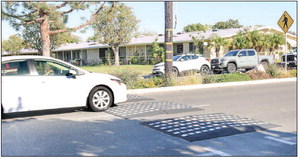Water-saving tips from the experts
ROGER'S GARDENS
There are many ways to conserve water, especially outside in the yard. These tips are from Roger’s Gardens, a leading garden center in Southern California with one of the largest plant resource libraries in the area.
Save up to 80%:
Conserve water with plants that are acclimated to Southern California’s unique climate. Thirsty plants from summer rainfall climates can be replaced with water conserving choices, including Mediterranean plants, California natives and succulents.
Save up to 50%:
Remove or relocate specific plants with water needs that are not matched to others in the irrigation zone. Planting a couple of thirsty plants in the same watering zone as low-water plants requires the entire zone to be heavily irrigated. Hydrozoning plants in a landscape is the art of matching the water needs of plants that are in a common irrigation zone. Often, just by moving or eliminating a few thirsty plants, irrigations can be greatly reduced.
Save up to 30%:
Apply a 2-4 inch mulch layer to exposed soil areas. A liberal surface mulching is one of the easiest and most efficient ways to conserve water, while also reducing water runoff issues, improving soil and plant health and adding to the aesthetics of the garden. Organic mulches will need to be replenished occasionally, as soil organisms incorporate them in the soil below.
Save up to 20%
Water during early morning and pre-dawn hours. Evaporation is a major source of water loss. Watering during the cooler early morning or evening hours will reduce water lost to evaporation, especially when using overhead irrigation systems. Reduce frequency and use of organic fertilizer. Aggressive fertilization creates lush, soft growth of many plants.
This lush growth increases a garden’s water needs. Often, a more conservative approach using slow acting organic fertilizers results in a more sustainable and water efficient garden. Eliminate overspray. Water should be applied to plants, not sidewalks, driveways or gutters.
Add devices to collect and store rainwater. In a typical Orange County year, a 3,000 square foot roof drains 26,000 gallons of free, clean water through its downspouts. Collecting some of that water may be surprisingly easy using water harvesting techniques.


